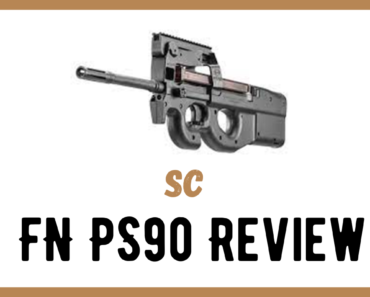In the event of a dangerous situation where one needs to protect himself, a firearm is often seen as the most effective defense. Handguns, in particular, offer the advantage of allowing the defender to maintain a safe distance from the attacker, as well as not requiring excessive physical strength or skill to use.
However, there may be circumstances where carrying a firearm is not possible. This could include living or working in a location where firearms are prohibited, having a criminal record that prevents obtaining the necessary license or permit, or simply not having the resources to purchase a firearm and invest in the ammunition and training needed for proficiency.
In any case, alternative defense options exist, even though they may not have the advantage of range and impact that a handgun has. Nevertheless, they can still be useful in keeping you safe.
A self-defense mindset
It is crucial to have a clear and decisive mindset when faced with potential violence. Real-life violent encounters are different from how they are portrayed in media, being fast-paced, chaotic, and often brutal. There is no room for hesitation or doubt. To be effective, you need to be ready to act promptly and confidently.
However, when relying on weapons other than firearms, it means that you must be in close proximity to the attacker. If you’re close enough to use a knife or alternative weapon, you’re also close enough for the attacker to reach you. Hence, the defensive techniques must be designed to disable the attacker quickly before they gain control.
The reality of violent confrontations is that they often involve a struggle for survival. The only objective is to emerge unscathed. There is no standard of fairness, only the requirement to employ any means necessary to secure victory.
For some, the idea of causing harm to another person may be uncomfortable, but it may be necessary to protect oneself and those close to us in such a situation. Accepting this fact and preparing for it can be a crucial aspect of self-defense.
Developing a self-defense mindset requires both mental preparation and physical training. Here are some steps to help you get started:
- Awareness: Always be aware of your surroundings and potential threats. Pay attention to people and their behavior, and trust your instincts if something seems off.
- Mental preparation: Train your mind to react quickly and effectively in high-stress situations. This can involve visualization exercises, stress-inoculation training, and exposure therapy.
- Physical training: Regular exercise and physical activity can help build your confidence and increase your ability to defend yourself. Consider taking self-defense classes or training in martial arts.
- Knowledge of self-defense techniques: Learn the most effective self-defense techniques, such as striking vulnerable points, escaping holds, and disarming an attacker. Practice these techniques regularly until they become second nature.
- Mindset: Cultivate a strong and confident mindset that you can use in defense of yourself and others. This means being mentally prepared to take action, no matter how uncomfortable or frightening it may be.
Remember, self-defense is not about winning a fight but rather about surviving and protecting yourself. By developing a self-defense mindset, you can be better prepared to handle dangerous situations and protect yourself and your loved ones.
Pocket self-defense items
Electroshock weapons
Electroshock weapons, such as stun guns and tasers, operate by administering a painful and temporarily paralyzing electric current. Stun guns come in a variety of forms, from basic black boxes to disguises such as lipstick tubes.
To use a stun gun, you simply make contact with the attacker and press a button to activate the current. Note that you need to be within close range to use a stun gun effectively, as the attacker could still harm you if they don’t go down immediately.
On the other hand, tasers provide a bit more range, as they release hooked metal probes attached by wires that can penetrate skin or clothing and deliver the current into the attacker’s body. While tasers have the advantage of lighting up the attacker, the weapon can become ineffective if one of the probes misses or gets disconnected. Additionally, tasers use single-use cartridges that need to be replaced after each use, and some models also include a stun gun feature.
The Taser was originally invented by Jack Cover, a researcher at NASA, in the 1970s. Cover was a fan of the science fiction character Tom Swift from a long-running series of novels. He named his new invention after his childhood hero and came up with the acronym “TASER” which stands for “Thomas A. Swift’s Electric Rifle”.
Pepper spray
The main component in pepper spray is capsaicin, the same substance that causes a fiery sensation when eating particularly spicy foods. Pepper spray is sometimes referred to as OC spray, where “OC” stands for oleoresin capsaicin. In simpler terms, oleoresin is an extract obtained through evaporated solvents, rather than steam distillation.
Upon being sprayed, pepper spray causes the eyes to close and tear, skin to burn, and respiratory difficulties. These effects typically last for around 30 to 45 minutes, giving you ample time to escape the situation. Some pepper sprays also contain a dye that makes it easier to identify the attacker later on.
When shopping for pepper spray, it’s important to look for the “Capsaicin and Related Capsaicinoids” (CRC) measurement, which indicates the amount of actual capsaicin in the OC spray. A minimum CRC of 1 percent is ideal.
Another factor to consider when choosing pepper spray is the delivery system. A stream-based system is preferable to spray, as it is easier to aim and reduces the risk of the spray blowing back towards you. Make sure to familiarize yourself with the effective range of your pepper spray, as well as how to accurately estimate the distance. Practicing this with a partner can help you get a feel for the range.
Knives
When selecting a knife for self-defense, blade geometry is a crucial factor to consider. A thin, sharp blade designed for slicing will perform better in a fight than a thicker, short-grind blade. A useful way to test the knife’s capabilities is by using it to carve meat at a dinner table. The blade should have a pointed tip for easy penetration into the attacker and does not necessarily need to be a foot long, as even a 3-inch blade can reach vital organs.
Additionally, repeated stabbing and slicing increases the chances of hitting tendons and blood vessels, effectively stopping the attacker. The handle is also an important aspect to consider, as it should be designed to prevent hand slippage, have a secure and comfortable grip, and have a textured surface for a positive grip even when wet. The goal is for the knife to remain in your hand during the altercation.
Tactical pens
The popularity of tactical pens has grown in recent years, with the concept originating from the kubotan that was introduced in the 1970s. These weapons serve as a solid cylindrical tool that can be held in hand and used for various purposes, including striking and gouging.
The pen can also serve as a writing instrument to take notes or write down a statement for law enforcement after an altercation. One of the simplest ways to use a tactical pen is to hold it in an icepick grip and use it to stab or strike the attacker. If the pen is of adequate size, it can extend from both sides of the fist, allowing for strikes from different angles without changing the weapon’s position.
The ideal targets for a tactical pen are the eyes, neck, and genitals. If you cannot swing your arm, try to press and twist the pen into the attacker. While any weapon is better than nothing, it’s essential to note that a disposable plastic pen may not be suitable for this type of use. Tactical pens are usually made of aircraft-grade aluminum with a knurled body for a secure grip.
Some of the popular brands of tactical pens in the USA include Gerber Impromptu, Smith & Wesson SWPEN3BK, Schrade SCPENBK, Nitecore NTP10, and Uzi TP2. These brands are known for their high-quality materials, durability, and versatility as both writing instruments and self-defense tools. It’s important to keep in mind that what might be popular in one area might not be the same in another, and personal preferences can also play a role in purchasing decisions.
Spikes
The main purpose of spikes is to inflict injury on an attacker. They can be made from either steel or plastic. A triangle shape is often favored for its ability to quickly and deeply penetrate, yet maintain its strength as a weapon. To employ the spike, grip it firmly with a closed fist and drive it into the attacker’s face or body. Repeated strikes enhance its efficacy. It requires practice to be able to perform successive stabs efficiently.
I own the Armory Replicas Street Smart Self-Defense Spike Keychain, which is a compact and highly effective tool for personal defense. With its sleek, hexagonal design measuring 6 inches and weighing 4.8 ounces, it fits comfortably in your hand with a smooth, solid steel finish. The small size makes it easy to conceal until it’s needed. This keychain offers two options for use as a weapon. You can use the pointed end for traditional Kubotan-style strikes against an attacker.
Additionally, the two spikes that extend from the side of the body provide added punching power when you make a fist. The keychain ring can be attached to your house or car keys, belt, or backpack, ensuring that the weapon is always readily accessible whether you’re exploring a new city or simply walking home at night.
Slungshots
A slungshot is a self-defense weapon that consists of a weight at the end of a flexible material such as cordage. Unlike a slingshot, which uses elastic to launch a projectile, a slungshot is swung directly at an attacker to cause impact. A popular type of slungshot is the monkey-fist keychain, which can be easily concealed and carried with you.
To use a slungshot effectively, it’s important not to spin it around several times before striking. Instead, you should grip the loose end of the cordage and swing the weight forward, putting effort into the movement as if you were swinging a hammer.
The aim is to strike the attacker in vulnerable areas such as the face or groin. It’s mandatory to note that slungshots, just like any other weapon, should only be used as a last resort for self-defense and that the legality of carrying a slungshot varies from state to state, so it’s important to familiarize yourself with the laws in your area.
Flashlights
Flashlights used for self-defense are typically heavy-duty, durable models that can be used to strike an attacker. They are usually made from tough materials such as aluminum, and many of them have a textured surface to provide a secure grip, even if your hands are wet. In addition to illuminating your path, these flashlights also serve as a makeshift weapon in the event of an emergency.
Some flashlights designed for self-defense are equipped with a striking bezel, which is a ridged or protruding edge around the lens that can be used to strike an attacker. Some models have a striking tip that can be used in a similar fashion. Some flashlights also have a strobe mode, which can disorient an attacker and give you an advantage in a self-defense situation.
In addition to these physical features, self-defense flashlights are usually designed to be compact and lightweight, making them easy to carry with you at all times. They are often rechargeable or have a long battery life so that you don’t have to worry about them running out of power when you need them most. Overall, flashlights used for self-defense are a versatile and practical tool that can help keep you safe in a variety of situations.
Concluding
The portrayal of self-defense in media often romanticizes it, but in actuality, physical altercations are violent and unpleasant. In such situations, it may be necessary to engage in actions that are morally reprehensible. However, it is important to keep in mind that you have loved ones who rely on you to protect yourself and be there for them tomorrow. Don’t leave anything to chance, and do everything in your power to ensure your safety and increase your odds of survival. The pocket self-defense items listed in this article may not guarantee a sure win in a confrontation, but they will certainly increase your odds of making it home safely.




























